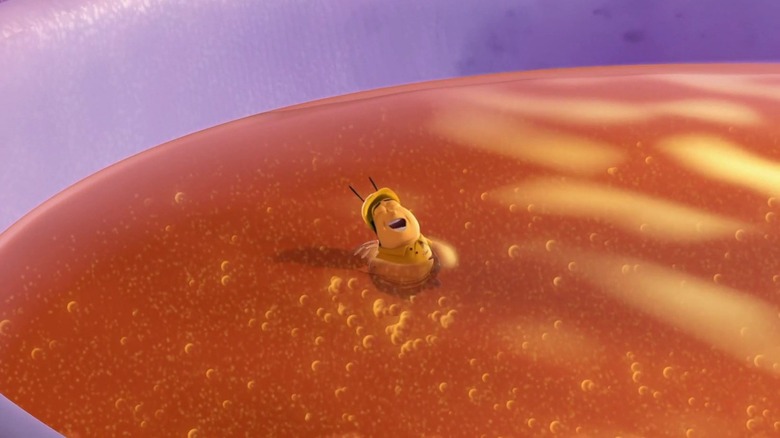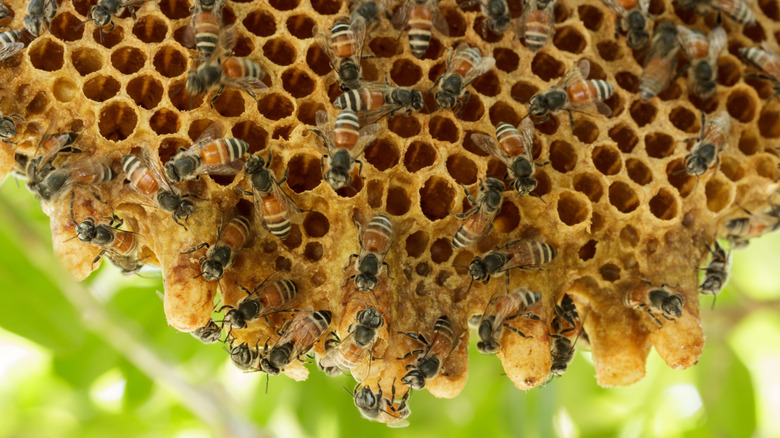The Reason Why Bees Make Tasty Honey
As explained in the "Bee Movie," honeybees are a vital part of the ecosystem because they pollinate vegetation. This pollination is what flowering plants need to make seeds, some of which grow into the food that both humans and animals eat. However, spreading pollen is mostly a byproduct of honeybees gathering nectar — a sugary liquid — from flowers so that they can make honey. Why do bees make honey, though? It's their source of food.
Just like how people store food in pantries and how squirrels survive the winter by caching food, honeybees do the same. Some of the pollen that attaches to the millions of hairs on worker bees is taken home with them and turned into bee bread, which is a source of protein for the larvae and adults alike. However, the flower nectar that they turn into honey is stored in the combs inside their hives and consumed as food during the winter when they're unable to forage. It's a particularly important source of energy for adult bees. Fortunately for us, bees always make more than they need to survive the season, allowing us to extract honey from a wild beehive or an apiary.
On top of being a source of food, the honey makes a great insulator for the hive, although that's not its the primary purpose. Bees exercise their wings during the winter, which naturally keeps their bodies warm. It also heats up the inside of their hive, and having the cells of the hexagonal comb filled with honey helps keep that heat inside.
How bees make honey
Honey is one of the benefits of having honeybees in your ecosystem, but the process of making it is a little complex. It starts when the bees use their proboscis — a thin, tongue-like tube — to drink nectar out of flowers. Since nectar can spoil without proper preservation — like how fruit juice can develop mold when you forget to put it back in the refrigerator — most of it is stored in their crop, a special pouch-like stomach that can hold as much as 80% of the insect's weight.
In the honey stomach, the nectar is mixed with saliva, and the enzymes and proteins from the saliva are what transform the nectar into honey by breaking down the complex sugars into simple sugars that are less likely to crystallize. All of this takes place while the honeybees fly from flower to flower and eventually back home. When they arrive, they regurgitate the partially processed nectar, passing it to younger bees who pack the changing substance into the hexagon-shaped, beeswax cells of the honeycomb.
Next, the bees use their wings to fan the mixture, encouraging evaporation to reduce the water content from around 70% to less than 20%. The lower water content is what makes honey ... well ... honey. Finally, the bees cover the cells with fresh wax. The honey can be stored there indefinitely because the high sugar content prevents the growth of bacteria and fungi. The bees can open one of these cells to drink the honey whenever they need it.

